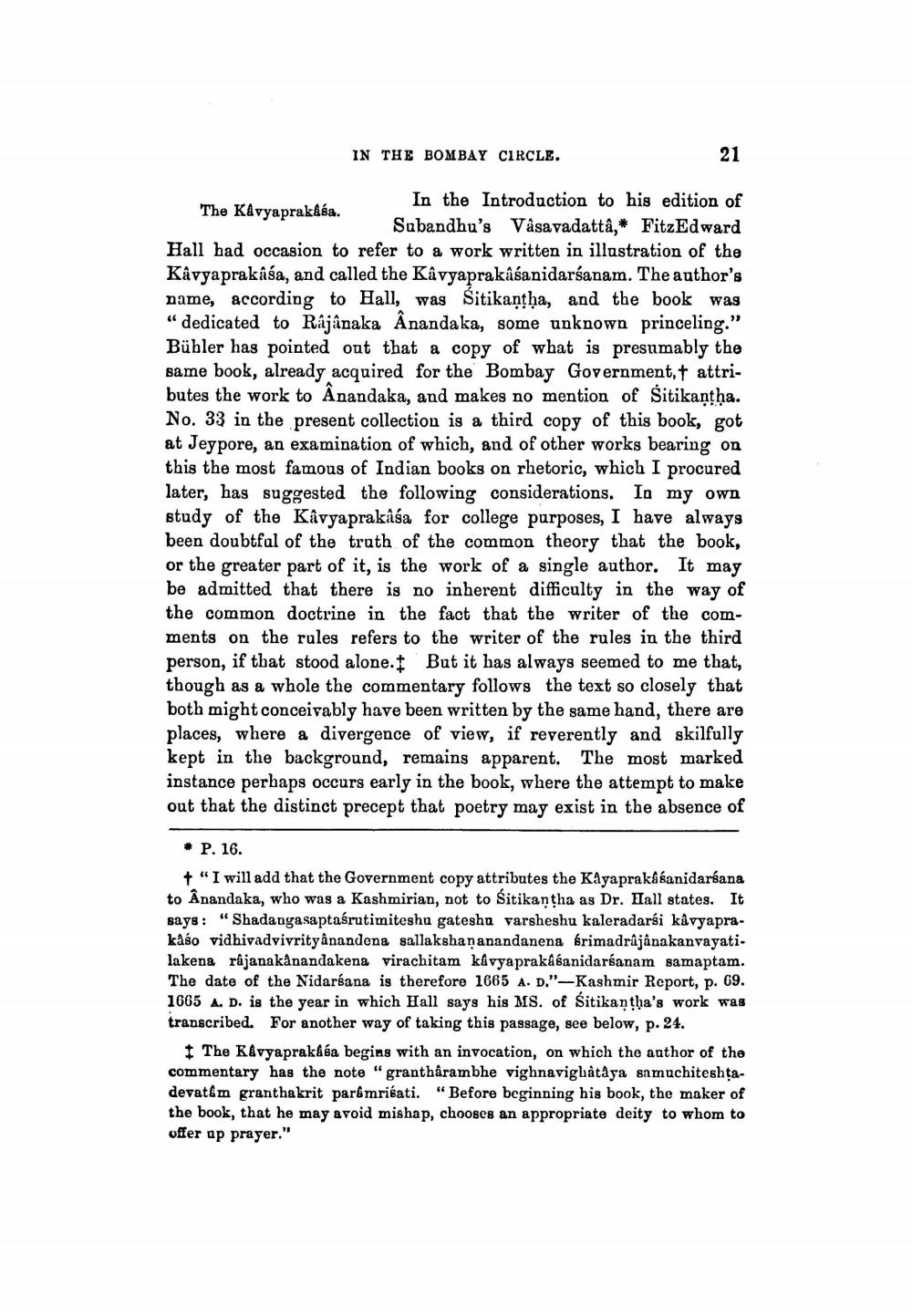________________
IN THE BOMBAY CIRCLE.
21
The Kavyaprakasa.
In the Introduction to his edition of Subandhu's Vasavadattâ,* FitzEdward
Hall had occasion to refer to a work written in illustration of the Kavyaprakasa, and called the Kâvyaprakâśanidarśanam. The author's name, according to Hall, was Šitikantha, and the book was "dedicated to Râjânaka Ânandaka, some unknown princeling." Bühler has pointed out that a copy of what is presumably the same book, already acquired for the Bombay Government,† attributes the work to Ânandaka, and makes no mention of Sitikantha. No. 33 in the present collection is a third copy of this book, got at Jeypore, an examination of which, and of other works bearing on this the most famous of Indian books on rhetoric, which I procured later, has suggested the following considerations. In my own study of the Kavyaprakasa for college purposes, I have always been doubtful of the truth of the common theory that the book, or the greater part of it, is the work of a single author. It may be admitted that there is no inherent difficulty in the way of the common doctrine in the fact that the writer of the comments on the rules refers to the writer of the rules in the third person, if that stood alone. But it has always seemed to me that, though as a whole the commentary follows the text so closely that both might conceivably have been written by the same hand, there are places, where a divergence of view, if reverently and skilfully kept in the background, remains apparent. The most marked instance perhaps occurs early in the book, where the attempt to make out that the distinct precept that poetry may exist in the absence of
P. 16.
"I will add that the Government copy attributes the Kayaprakasanidarśana to Ânandaka, who was a Kashmirian, not to Sitikan tha as Dr. Hall states. It says: "Shadangasaptaśrutimiteshu gateshu varsheshu kaleradarsi kâvyaprakâso vidhivadvivrity ânandena sallakshananandanena śrimadrâjânakanvayatilakena rajanakânandakena virachitam kavyaprakasanidarśanam samaptam. The date of the Nidarśana is therefore 1665 A. D."-Kashmir Report, p. 69. 1665 A. D. is the year in which Hall says his MS. of Sitikantha's work was transcribed. For another way of taking this passage, see below, p. 24.
The Kavyaprakasa begins with an invocation, on which the author of the commentary has the note "granthârambhe vighnavighâtâya samuchiteshțadevat&m granthakrit parâmrisati. "Before beginning his book, the maker of the book, that he may avoid mishap, chooses an appropriate deity to whom to offer up prayer."




